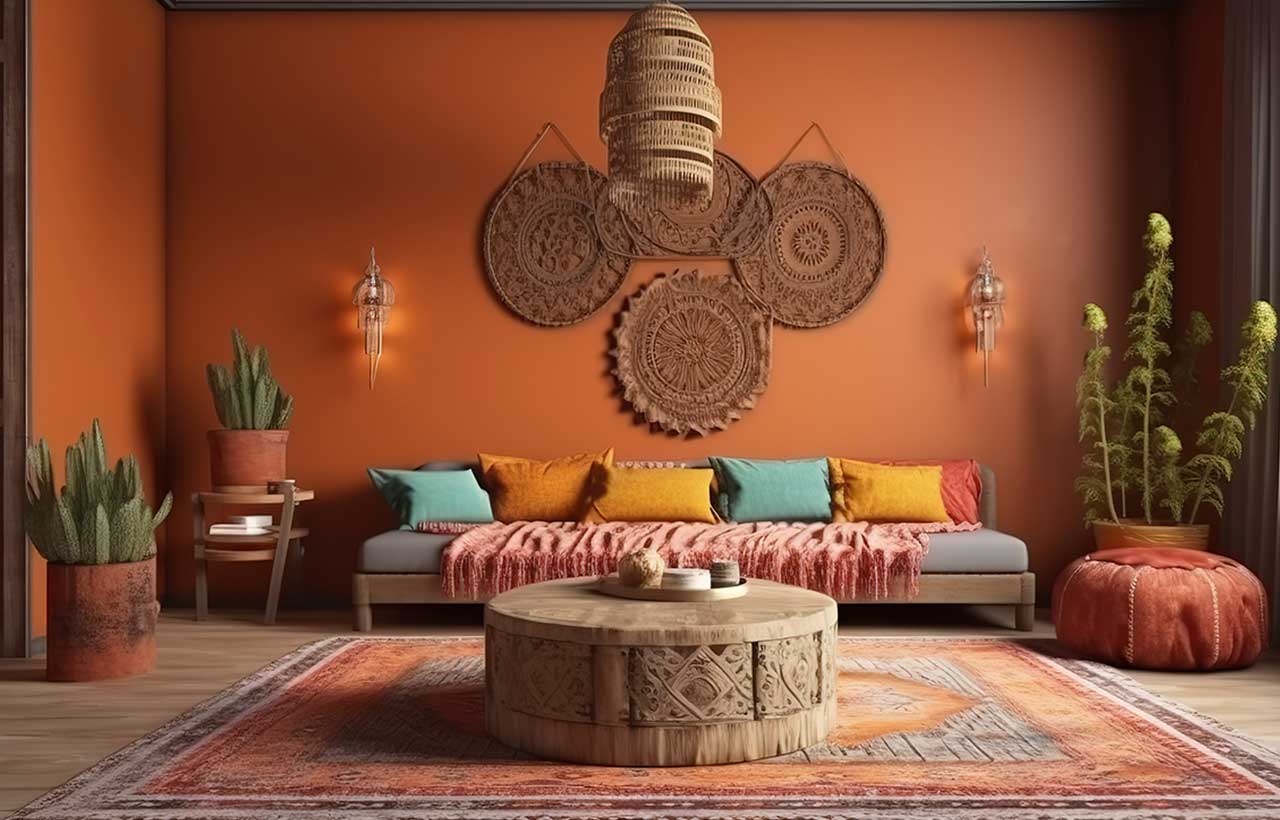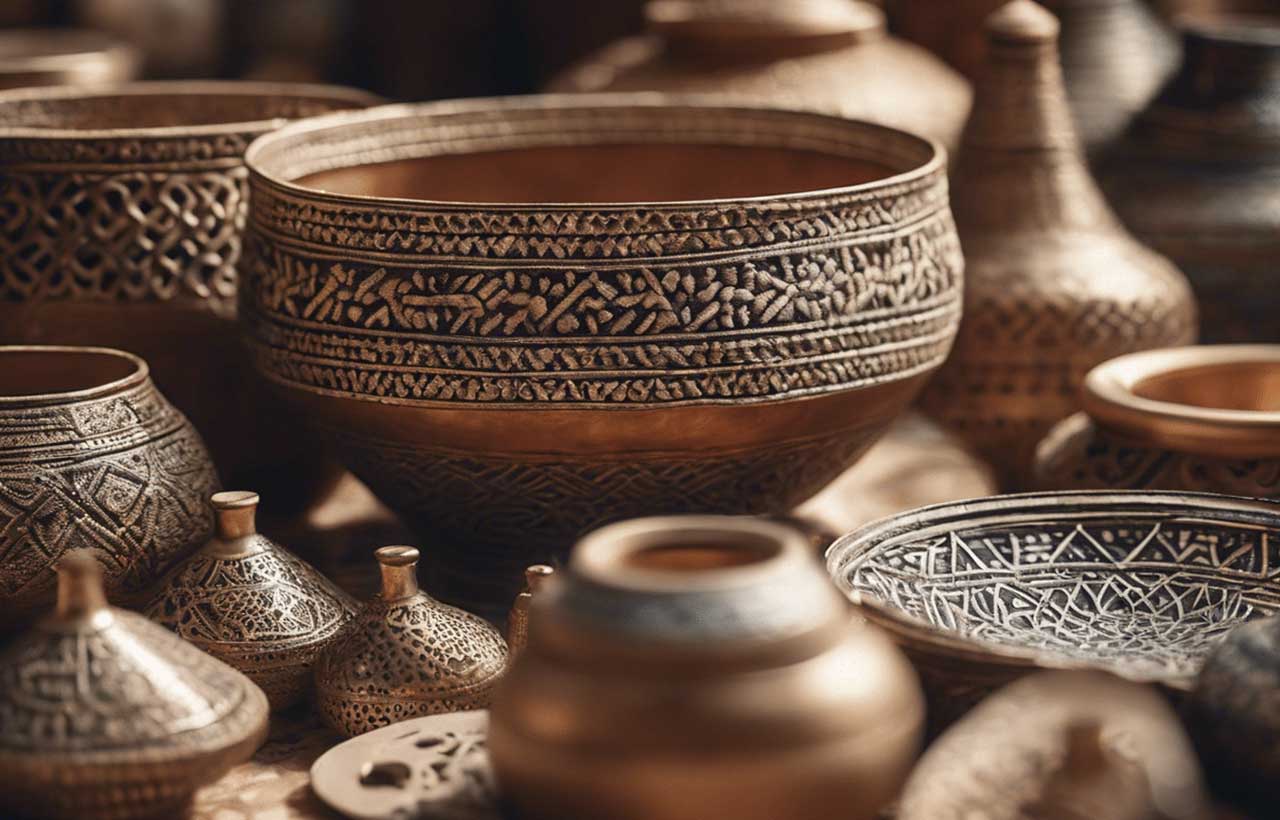Master Craftsmen: Guardians of Traditional Skills
- November 18, 2024
- By: Yukti Kasera
- INFLUENCERS
 Craftsmanship is diverse. It encompasses a wide range of disciplines. These crafts are more than just a means of production. They represent the dedication, and creativity of those who have spent their lives refining their profession. Building Material Reporter shares some amazing insights about the beauty of craftsmanship which is worth knowing.
Craftsmanship is diverse. It encompasses a wide range of disciplines. These crafts are more than just a means of production. They represent the dedication, and creativity of those who have spent their lives refining their profession. Building Material Reporter shares some amazing insights about the beauty of craftsmanship which is worth knowing.
The Timeless Art of Craftsmanship
The world is an art! Different places across the globe have different artworks which represent their culture and heritage. But these artworks are not just limited to their heritage. With the changing times, craftsmanship became more than just the trade; it started serving as a foundation for culture, identity, and creativity. But craftsmen are the guardians of the age-old traditional skills. They are the custodians of these traditional talents, artisans who have spent decades honing their profession and handing down techniques from one generation to the next. They are guarding the rich past of the heritage, making sure that the traditional techniques are not lost in the contemporary world. Just like the refinement in the building materials, crafts are also ruled by the innovative materials that have come up in the modern age. The modern push for mass production and technical advancements in the field of art and craft should not dampen the spirits of originality.
A Journey Through History: The age-old tradition of craftsmanship connects the past and the present. It guides us to a future based on skill, precision, and beauty. Carved woodwork or finely tailored textiles- the essence of craftsmanship is to create something which is long-lasting and worthy.
The history of craftsmanship is more than just handcrafting. The process speaks a lot about integrity, creativity, and the pursuit of greatness. The beauty of craftsmanship started from the oldest tools made by prehistoric people, trending towards the highly specialized works of modern artisans. This trip through the history of craftsmanship demonstrates how people have sculpted and manipulated materials to produce utilitarian, artistic, and long-lasting artifacts that characterize civilizations and communities.
The Evolution of Craft Techniques: This has evolved in terms of technical advancements, societal demands, and cultural adjustments. Handcrafted craft and artwork, whether useful or decorative, continue to have an enduring appeal. The world is now more focused on mass production. It is a testament of talent, artistry, and the personal touch that turns raw materials into long-lasting works of beauty. It is a bridge that connects the past and present, while inspiring future generations also.
The interaction between people and the materials they use, the equipment and the ways they engage with the outside world is reflected in the development of craft practices. The procedure has evolved from ancient stone tools to digital production. With the advent of new technologies and contemporary design philosophies, traditional techniques are not only being conserved but are also being reinterpreted and rejuvenated.

The Role of Master Craftsmen
Master craftsmen play an important historical and cultural role, and also in passing down the craft knowledge through generations. A master craftsman is someone who has a thorough knowledge and expertise in specific craft or trade. Their role is multifaceted. It is important for both traditional and modern communities. Their work continues to resonate, whether through the preservation of artistic talents or the development of new forms, backed by innovation and cultural ideals.
Keeping Traditions Alive: Traditional craft preservation is a wholesome process that takes devotion, inventiveness, and assistance from local communities, governments, and worldwide networks. The incorporation of crafts into contemporary design, celebration of craft culture through storytelling, keeping traditions alive is about more than just preserving techniques- it is also about preserving the cultural identity and values. Traditional craftsmanship serves as a helpful antidote, reminding us of the beauty of handcrafted, deliberate effort. In a society where mass manufacturing is frequently valued and people are inclining towards crafts, their production has significantly increased. By preserving traditions, we protect the people, histories, and civilizations.
The Mentor’s Touch: Passing Down Knowledge: In an increasingly technological and mass-produced world, the importance of craft mentorship is indispensable. It retains not only skills, but also the essence of craftsmanship. The personal connection, patience, and commitment to creating something with intention and purpose- mentorship guarantees that craft thrives in a world. It values speed and efficiency over artistry and tradition.
Mentor's touch in craftsmanship is about more than just passing on knowledge. It's about keeping the soul of a craft intact- the skill of making, learning, and living completely through one's work.
Diverse Crafts Across Cultures
Crafts are more than simply products; they are expressions of culture, history, and identity all around the globe. The precise and meditative skill of Japanese origami, the bright symbolism of Indian Madhubani paintings, or the sacred ceremony of Native American beadwork- each craft reflects its people's distinct vision and tradition. Crafts continue to connect people. It weaves a beautiful tapestry of global creativity and cultural exchange.
An Overview of Global Craftsmanship: Craftsmanship throughout the world is more than a means of production. It is a significance of cultural testament: a statement of identity, and a link between the past and the present. While the world has become more advanced and in sync with each other for the transactions and exchange of art and craft, these goods have important cultural and economic value. This shows a strong connection between individuals and their surroundings, along with the love for tradition, skill, and heritage.
As worldwide awareness of sustainable practices rises, the resurrection and sustained appreciation of traditional craftsmanship provides a crucial counterbalance and push to the mass-produced culture that frequently dominates today's consumer market as well as the home construction market. Crafts reflect not only beauty and ability, but also the identity, and cultural legacy in the modern world.
Unique Techniques and Styles: Craftsmanship is a timeless manifestation of culture, creativity, and ability. Each craft tradition brings its own approach to producing, whether through sophisticated processes, the use of natural materials, or a particular style. Craftsmen around the world have refined their techniques over decades, producing timeless items that represent both personal mastery and cultural history.
The world of craft is as diverse as it is rich in history and technology, ranging from the delicate complexity of Rajasthan’s marble craft to the raw beauty of Kintsugi. Each craft, whether traditional or innovative, reflects the values and creativity of the civilizations that practice it. These distinct techniques, resources and styles not only provide insight into human ingenuity, but also preserve the legacies of craftsmanship.
Challenges Faced by Modern Craftsmen
The journey of a craft designer is not that easy. Craftsmen today face a unique set of problems molded by a quickly changing global landscape, shifting preferences, and the major issue: the struggle between preserving traditional processes and embracing innovation. While many of these issues are unique to certain crafts, they have an overall impact on the field of craftsmanship.
While the challenges that craftsmen face now in the contemporary world, is complex. Artisans who can adapt to changing markets, competition, incorporate new technologies, and remain committed to tradition will continue to succeed. Also, the growing consumer interest in environmental responsibility, and uniqueness creates chances for craftsmen to demonstrate the worth of their work in a world that craves real artistic products.
The Impact of Modernisation: Modernization has created a great impact on art and crafts which is diverse. But it has both positive and negative consequences. While certain crafts have evolved over the years with contemporary tools and methods, others have seen variations by mass production and technological improvements.
Modernization brought efficiencies, innovation, and new opportunities to craftsmen. It has also offered issues such as skill loss, cultural preservation, and market competitiveness. The current craft industry seeks a balance between tradition and innovation- integrating current technology and approaches. This hybrid method can allow old talents to thrive in the modern world, satiating the authenticity of handcrafted work and the advantages of modern equipment, innovative materials and technologies. In the modern day decor, innovative craftwork with good and impactful LED lighting trends can make the ambiance look rich and elegant.
Sustaining a Living Heritage: Maintaining the living tradition of crafts and eco-design is not only the duty of artists. It is a result of the collaborative efforts initiated by customers, cultural groups, governments, and communities. By providing craftsmen with reasonable compensation, marketing opportunities, and education, we can assist ensure that traditional crafts are alive and well for future generations. The beauty and worth of handmade goods can be appreciated by ensuring sustainability. The sustainability of craftsmanship depends on a common commitment to maintaining traditions, supporting artisans, construction technology if it's about architectural craft and understanding the current problems in ways that honor both heritage and creativity.
The Future of Traditional Skills
The future of traditional arts and crafts is positive and so of the craftsmen as well. It is becoming increasingly important as the world deals with rapid technological changes, mass manufacturing, and globalization. With the emergence of technology and mass-produced goods, there are growing initiatives to maintain, adapt, and appreciate traditional craftsmanship in the modern world. The future of traditional talents is determined by a number of elements: cultural preservation, technological integration, consumer demand and artisans' roles in contemporary society.
Innovations in Crafting: Traditional crafts are developing as artists and creators embrace new techniques, materials, and ideas to push their craft's boundaries while remaining true to tradition. Innovations for craft production do not always imply the abandonment of traditional processes. They frequently involve a combination of the old and the modern, combining centuries-old craftsmanship with contemporary design, technology, and sustainability principles. These advances allow craftsmen to broaden their creative horizons and access worldwide audiences while maintaining the cultural relevance of their crafts. Innovative disciplines like computer enabled machines, technology, advanced logistics etc. have been a boon in crafting. Just like the change in the construction industry, the craft industry all around the world is also changing with good facility management being evident.
Attracting the Younger Generation: The beauty of crafts is significantly being transferred to the future generations. The realm of traditional art and craft faces a significant challenge: how to engage the younger generation, who may choose digital technologies, and convenience-oriented lifestyles. Youngsters have grown up in a culture of quick satisfaction, with little exposure to skills, patience, and artistry required for handcrafted work. However, Gen z embraces the inherent traits of craftsmanship, such as originality, sustainability, smart design, individuality, and authenticity. By matching traditional crafts with today's youth's interests, values, and lifestyles, craftsmen and organizations can spark a new surge of interest in handcrafted goods, ensuring that craft traditions are passed along. Nowadays, crafts and artworks are also ruling the architectural trends.

Celebrating Craftsmanship
Craftsmanship is all about recognizing the great worth and humanity integrated in creating the curated work. It is about honoring the skills that have been refined over years of practice, the old tales associated with them, and the cultural legacy that these crafts represent.
Showcasing Masterpieces: Showcasing crafts masterpieces is more than just showcasing artifacts. It is about establishing an environment in which craftsmanship, tradition, and innovation are valued and celebrated. By organizing exhibitions, increasing awareness, and providing fully immersive experiences, the importance of craftsmanship can be ensured.
In honoring craftsmanship, we recognize not just the beauty and utility of handcrafted creations, but also the cultural legacy and personal tales embedded in each one in the construction & design industry. Master craftsmen's craftsmanship can be brought into the worldwide spotlight through a variety of channels, including museums, galleries, internet platforms, festivals, and private collections- guaranteeing that their work is enjoyed for years to come.
Honoring Craft Legends: Throughout history it has been observed artisans have gained honors for their exceptional ability, inventiveness, and influence on their field. These "craft legends" not only mastered their respective disciplines, but also helped to preserve, and elevate the cultural value of their crafts. Honouring their work and legacy is critical not only for appreciating their individual accomplishments, but also for motivating future generations of artists. Celebrating these craft icons ensures that their tales, techniques, and accomplishments are passed along to future generations, emphasizing the enduring worth of craftsmanship. Through workshops, awards, documentaries, accolades, digital promotions and articles- the modern day craftsmen can be honoured and uplifted. This can also help in building a sustainable future.
 Building Material Reporter believes in serving the best! Stay tuned with us for more ideas and news related to construction technology, green buildings, home decor, interior design, new projects, architecture, and innovative materials in the industry.
Building Material Reporter believes in serving the best! Stay tuned with us for more ideas and news related to construction technology, green buildings, home decor, interior design, new projects, architecture, and innovative materials in the industry.
Frequently Asked Questions (FAQs)
What defines a master craftsman?
A master craftsman can be defined as the epitome of extensive knowledge, technical ability, and a lifetime commitment to the one thing: art. They are artisans who have attained the pinnacle of ability and expertise in their field of craft, generally via years of experience, study, and practice.
Why is it important to preserve traditional craft skills?
The preservation of traditional craft skills is critical for encouraging innovation, promoting sustainable economies, and enriching global communities. As we traverse a fast changing world, the importance of these age-old practices becomes increasingly apparent, as they provide solutions to sustainability, creativity, and social cohesion.
What challenges do master craftsmen face today?
The challenges faced by the master craftsmen are both external, such as economic pressures and altering consumer tastes, and internal, such as the difficulties associated with preserving quality and passing on knowledge.








